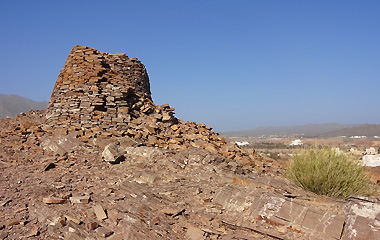

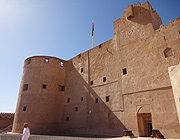
Labyrinthine Jabrin Fort has tall, airy rooms and tiny cramped jails, an open-air kitchen space and the famous Sun and Moon Room which, like several others, has a beautiful painted ceiling.
The Bronze Age beehive tombs of Oman are often situated in striking locations, high on hilltops and ridges ovelooking settlements.
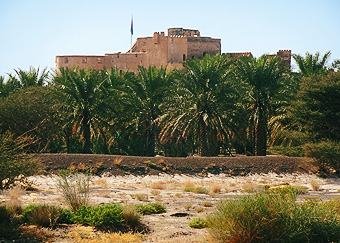
40km west of Nizwa Jabrin Fort stands in splendid isolation surrounded by date palms.
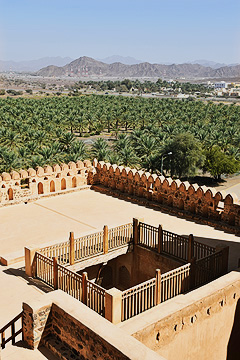
Dating from around 1670 during the long rule of the Ya'aruba dynasty, one of the most important periods for Oman. They signed the first trade treaty with the British in 1646 and had driven the Portuguese from their shores by the middle of the 17th century.
The future imam, Bil'arab bin Sultan bin Saif (ruled 1680-92) had the fort built, he now lies buried in a crypt beneath his fort. As was often the case, the building was altered in later times, and underwent an extensive renovation in 1979 which took four years.
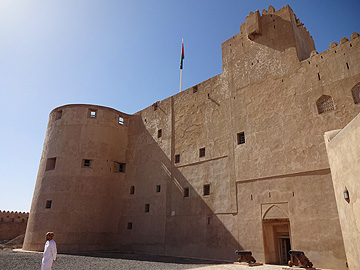
Our guide Kareem thought that Jabrin Fort was the most interesting Omani fort, and many would agree with him. It certainly has many diverse rooms and some truly beautiful decorative features. There is also more information available and good audio guides so it is a lot easier to understand the function of the different spaces.
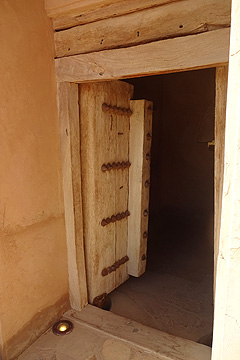
As with Bahla Fort, this is a labyrinth of many interconnecting rooms. Here they are arranged on three floors, and the roof space was also used. On two sides a large walled compound has a small mosque, before the entrance to the fort itself.
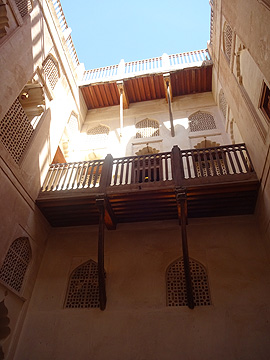
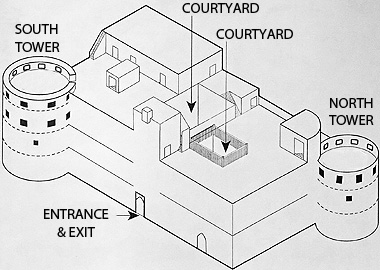
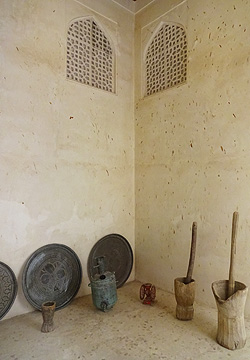
On the ground floor are utility and military rooms - the kitchen and food and date stores on the north side of the two interior courtyards, soldiers' quarters, armoury (in the base of the south tower), cannonball stores, jails, and the tomb of Imam Bil'arab bin Sultan bin Saif on the south side.
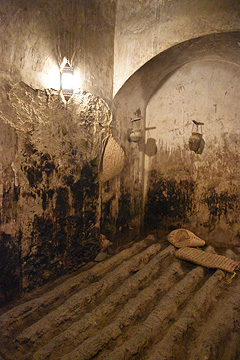
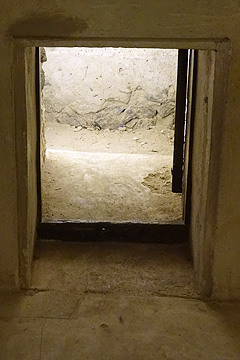
It is only possible to go between the two sides of the fort on the ground floor and on the roof, on the first and second floors the areas are completely separate.
The kitchen was situated in the north courtyard where smoke from the cooking fires could easily escape. Multiple cooking hearths were used to prepare the all-important coffee, heat milk, bake bread, boil porridge and grill meat, fish and fowl. Huge copper cauldrons would be used at major events when there might be hundreds of guests and the need to prepare vast quantities of food.
The date store was nearby, in the base of the north tower, with space for many tons of dates, against a time of siege. Every home would have a date store but in forts the dates served a dual purpose.
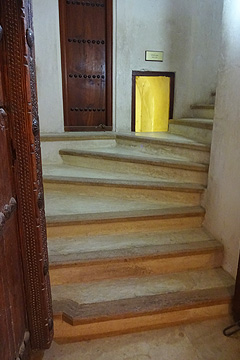
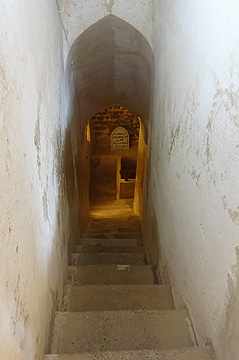
The dates were stored in sacks and their own weight caused date juice to flow out and down channels to be collected in earthenware jars. In peaceful times the dates and juice were used only for consumption. In times of war, however, the date juice was boiled to be poured onto the heads of invaders through murder holes above the castle doorways.
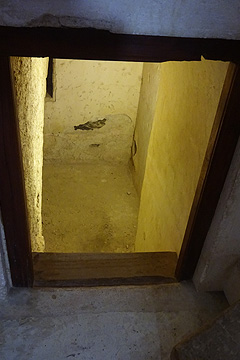
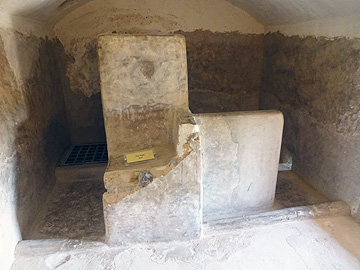
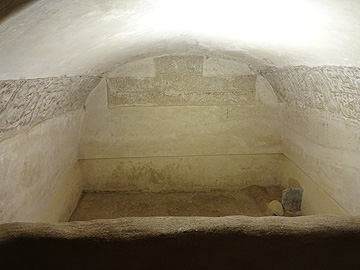
On the first floor are formal rooms including libraries, reception rooms, a courtroom and three dining rooms plus a stall for the imam's horse!
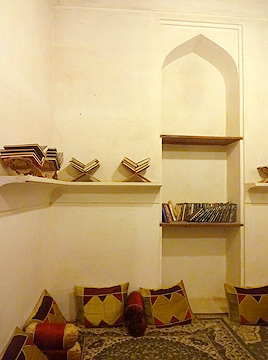
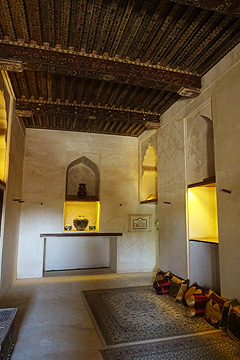
The timber ceilings are invariably beautifully decorated.
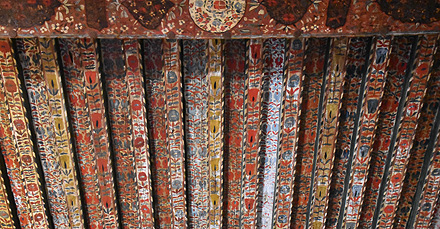
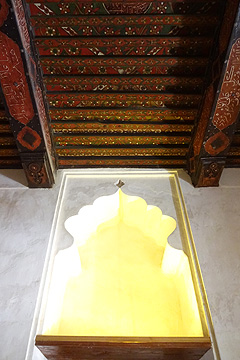
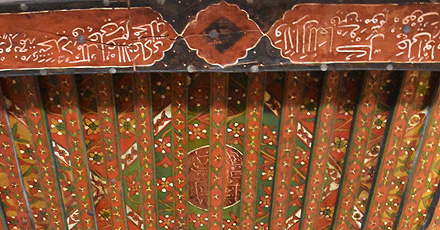
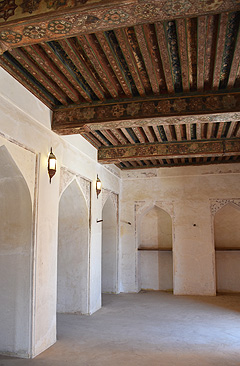
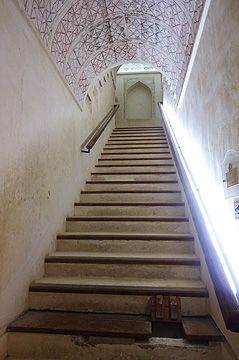
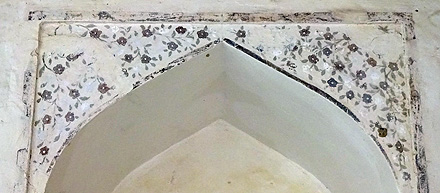
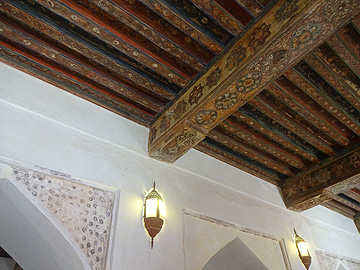
On the top floor are the opulent rooms where the imam and his family lived and where he held important meetings. The most beautiful staircase leads from the first floor up to the imam's rooms, also equipped with a trap for the unwary intruder!
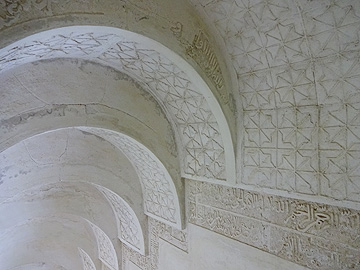
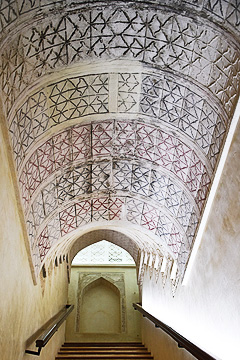
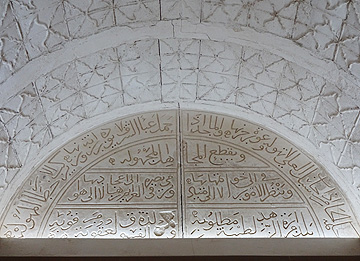
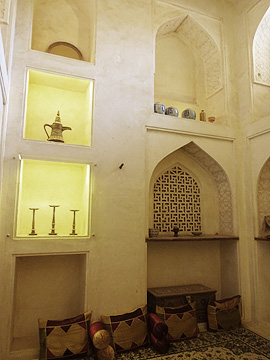
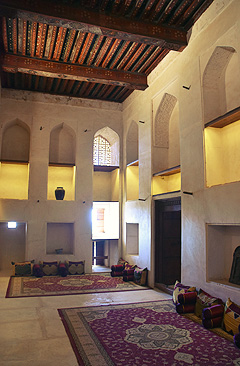
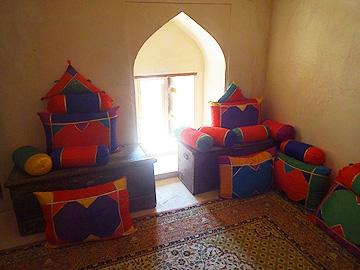
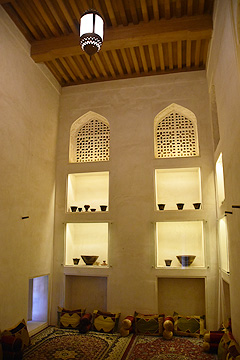
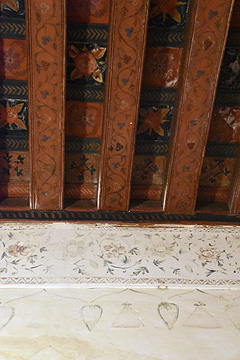
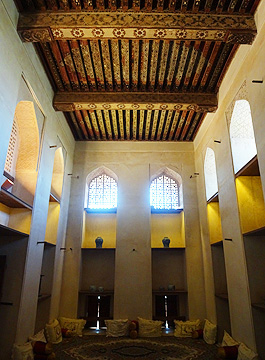
The most famous room is the Sun & Moon Room. It has seven high windows and seven low windows which can be shuttered or opened to shield from the heat of the sun or take advantage of breezes.
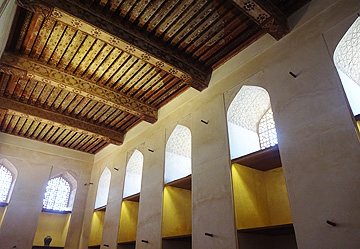
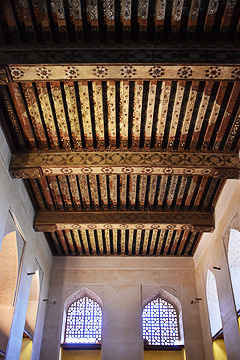
On the carpets and the timber ceiling is an eye-shaped design, watching over the imam's meetings.
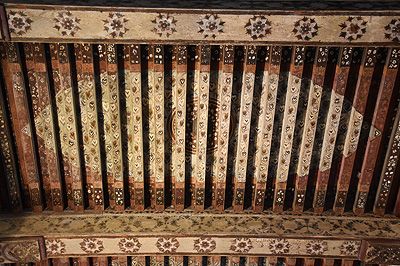
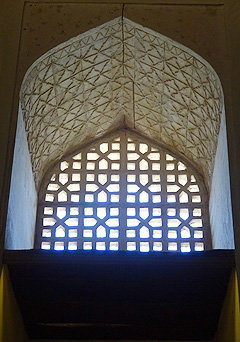
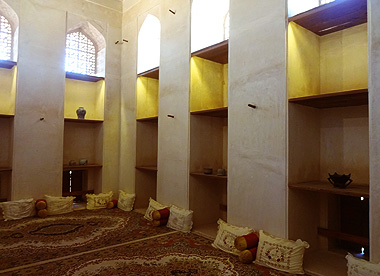
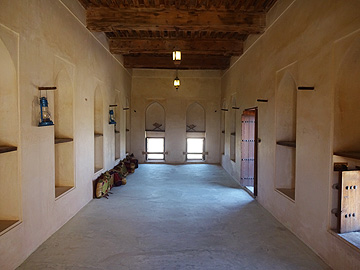
On the upper roof are a mosque and Qur'an school or madrasah and great views over the date palms.
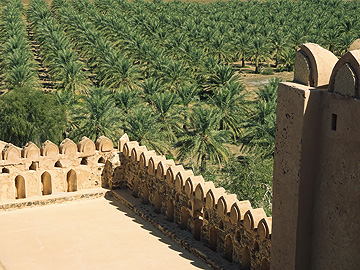
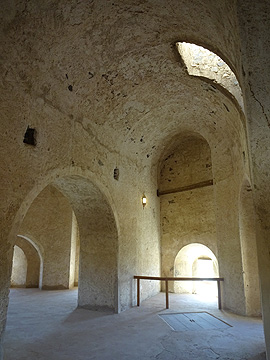
On the second floor of the south tower, an impressive arched space once used as a gunnery platform, we came across some lovely ship graffiti - no idea how old it is.
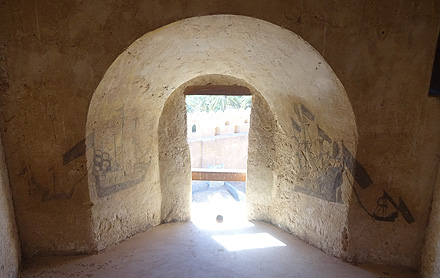
Afterwards we had watermelon, dates, halwa and coffee on a carpet with comfortable cushions in the shade of a large tree.

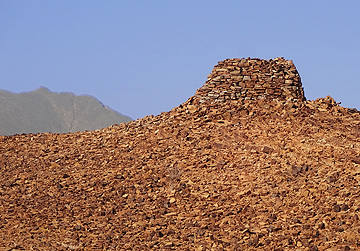
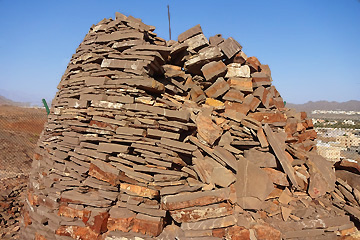
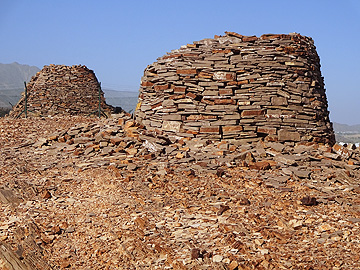
40km east of Nizwa these ancient beehive tombs also stand in isolation, high on the hills above the village. However, they are a lot less well-cared for than Jabrin Castle.
There are quite a lot of beehive tombs in northern Oman, dating from around 5,000 years ago. They are constructed out of stone, without mortar, in a conical shape (hence the name) and with a small entrance at ground level.
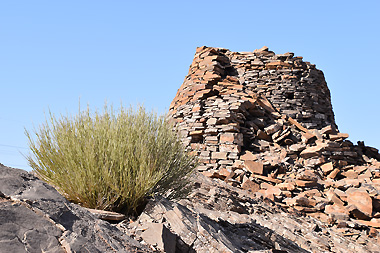
At Zukait there seem to be many sited on the hill above the village and further off on ridges. Several are surrounded by high fences to protect them. Sadly all the floodlights which would illuminate the tombs at night have been smashed.
